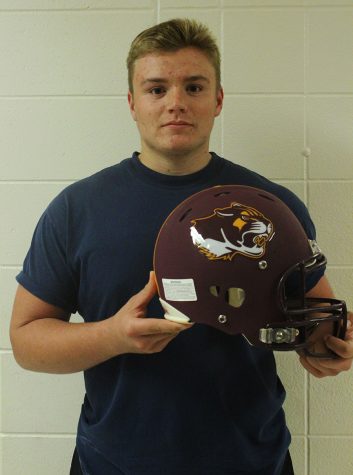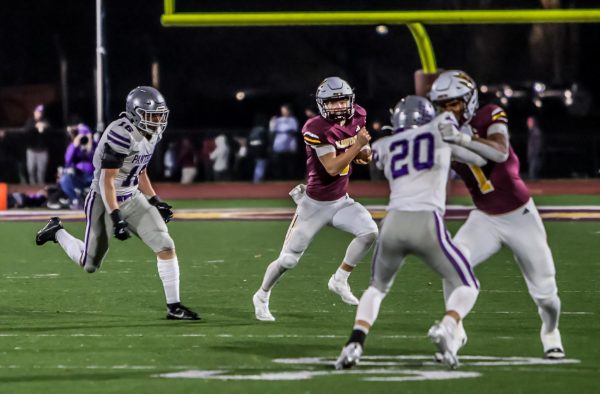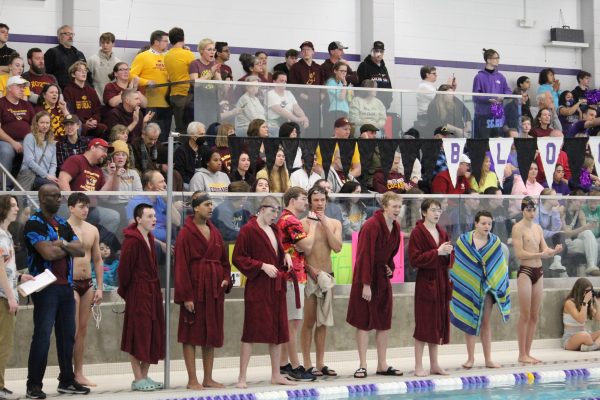Transforming Concussion Awareness: Saving One Football Player at a Time
From short-term memory loss to the loss of balance and even suicide, concussions are not just headaches.
They are painful, scary and life-changing.
North junior Connor Smith, number 51 on the football field, knows this all too well.
His past concussions have been so severe, that he is already experiencing issues short-term memory loss.
“My father and all of his brothers played college football,” he said. “You see the physical toll it’s taken on them, it’s a lot [ …] I’m really worried about how it is going to affect me in the future.”
This offensive lineman has been playing flag football since kindergarten and contact football since 7th grade. His last recorded concussion occurred this summer at Indiana University’s (IU) football camp.
The players at camp were doing drills, and Smith went against an All-American, a player deemed to be one of the best in the sport at high school level, out of Avon, IN.
The player ran straight into him and hit him square in the helmet. The impact was so severe that Smith was knocked out.
When Smith came to a few seconds after, he had massive ringing in his ears. But instead of worrying about the ringing, he was more concerned about being embarrassed.
“I woke up about a second later and looked up at the IU [offensive-line] coach, thinking, ‘Oh crap, I just got my tail kicked in front of everybody,’” he said.
He knew that he had a concussion but did not want to get his parents involved. He also did not want to stop practicing.
“I broke the one rule that you should never break when you know that you have a concussion,” he said. “Ask the trainer for an ibuprofen or an Advil, thinking that they won’t know you have a concussion.”
Even though he tried to keep the concussion a secret, his trainer immediately knew that something was up.
Following procedure, the trainer called Smith’s parents and recommended taking him to the ER. It was there that his concussion was confirmed. The doctor told Smith’s family that hits to the head always result in a concussion.
Smith’s mother was “scared straight” and told him that if he got one more serious concussion, he could not play any longer.
Smith woke up the next day feeling fine. His vision was not blurry and the ringing was nonexistent. The concussion was so minuscule that all the immediate effects had worn off in 12 hours. He even drove to IU camp to watch the other players practice.
“People say that you just got your bell rung and I did just get my bell rung for a while,” he said.
However, he was not allowed to play for a week because the trainers held him back. Smith thinks that doctors, especially ones with kids, keep players out of the game for longer than needed. He would have gone back in the next day after his concussion if not for the medical professionals looking after him.
However, he also understands why the doctors take this caution. Football has been in the news because of the multitude of NFL players diagnosed with chronic traumatic encephalopathy (CTE). CTE results in dizziness, memory loss and can cause the diagnosed person to have suicidal thoughts.
Fear of long-term effects haunt Smith.
But it still doesn’t overshadow his love of football.
The longer you play football the more likely that you will sustain an injury that lasts a lifetime. He can tell you facts that he has studied but he cannot tell you what he had for breakfast or what song he chose to play on the way to school that morning. And this makes him absolutely terrified for how it will affect him in the future.
“I’ll deal with any injury that I have to if that means I get to play it for four more years,” he said.
North’s football assistant coach Tyler Abel said that when he was in high school and college, there were no protocols for concussions. Abel, who is also the offensive coordinator, said that back then, headaches were a part of the game. No one thought it was caused by something as serious as a concussion.
Abel thinks that the public’s awareness of concussions has aided in making the sport safer than it has ever been. The study of concussions has become a science. Many resources are available to educate the public on how to detect concussion symptoms.
Coaches in Indiana go through rigorous training to be able to detect when a player has a concussion. They also learn about Heads Up Tackling, which they in turn teach players. This method of tackling helps to protect the players’ heads. Instead of using their heads to tackle an opponent, they use their chests and limbs to tackle adequately.
“The majority of concussions are not preventable,” Abel said. He goes on to explain that the preventable concussions are prevented with good technique and well taught fundamentals.
When players do get a concussion, there is now a strict protocol they must go through before they are cleared.
At the beginning of the season, players are required to take a baseline test to determine their level of focus and brainpower. They must get to their initial level to be cleared to play again.
Education and awareness is a key to minimizing damage done by concussions. Pro-football players who develop CTE after suffering multiple concussions over a long period of time sometimes end up committing suicide because their mental state has deteriorated. They suffer from debilitating mental illnesses.
The coaches at North are fully aware of this possibility in the players’ futures and work to prevent it as much as possible.
“We try to do a really good job of keeping in front of it and making sure parents understand that we know the risks that are associated with it,” Abel said. “And we are doing everything in our power to make sure that the kids are as safe as possible.”







